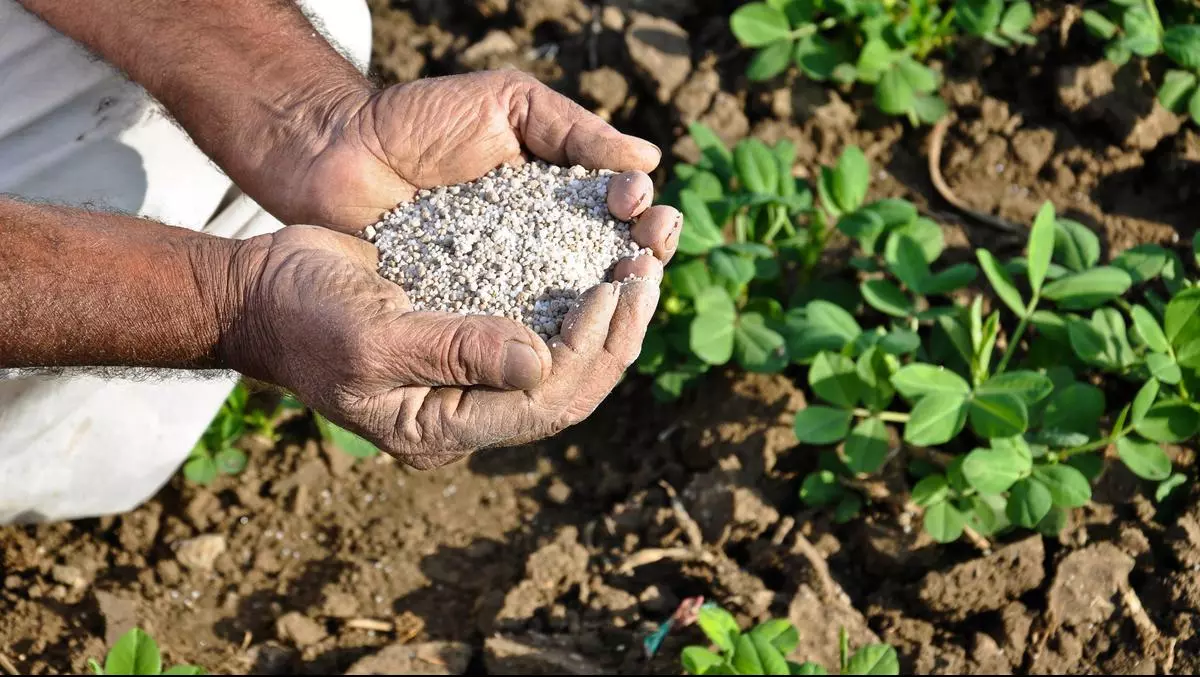The agricultural sector, which accounts for one-third of global gross domestic products, is critical due to growing environmental concerns and the need to shift towards sustainable methods. However, the world’s population is predicted to increase to 9.5 billion people by 2050, which will result in a higher demand for food.
One of the most important ways to support agriculture’s circular economy is through the use of organic fertilizers, as they improve soil health and ensure a substantial contribution to the larger objective by preserving the environment with the help of natural resources and organic waste streams.
The consumption of chemical fertilizers nearly doubled, rising from 34.5 MMTPA (million metric tonnes per annum) in FY’01 to 64 MMTPA in FY’22. Nitrogen constitutes over 50 per cent of all fertilizers. Excessive nitrogen exposure reduces soil carbon levels, resulting in soil nutrient imbalances and ultimately lower yields due to deteriorating soil quality.
Need for sustainable farming practices
To lessen the negative environmental effects of current farming methods, sustainable agriculture is essential. The Food and Agriculture Organization of the United Nations (FAO) estimates that in 2019, the world’s food systems were responsible for 17 billion tonnes of CO2 equivalent, or 31 per cent of greenhouse gas emissions caused by human activity.
This encompasses greenhouse gas emissions from agriculture and land use, livestock and crop production, household food consumption and waste, and the energy utilized in farming, food processing, and transportation. An easy available solution for low SOC (Soil Organic Carbon) levels is Fermented Organic Manure (FOM), which is produced by Compressed BioGas (CBG) facilities that operate based on the principles of the circular economy. By using FOM, we can reduce the carbon cycle. Presently there are around 60 commercially operating CBG plants in India generating ~ 2000 TPD of solid FOM under SATAT.
The high organic carbon content of the FOM produced, at least 14 per cent as per Fertilizer Control Order (FCO) notifications, can restore low SOC levels. Organic fertilizer also helps in improving soil health and nutrient cycling through nitrogen fixation and can ultimately help in high quality crop.
Promoting resource efficiency and waste usage
The two main principles of circular economy are encouraging waste usage and resource efficiency. With a minimum nutritional (N,P,K) input of 1.5 per cent (as per FCO notifications), or 15 kg per ton of organic manure, organic fertilizers provide 10.82 lakh tonnes of NPK to the current usage level of 722 lakh tonnes. There is the potential to produce ~3500 lakh tonnes of organic manure (Solid-FOM) because of the availability of potential feedstocks that can be anaerobically digested. Approximately 52.50 lakh tonnes of NPK nutrients can be added by applying 3500 lakh tonnes of organic fertilizer.
Economic viability and farmer resilience
Biofertilizers offer a double hope for farmers struggling with rising costs and a potential fertilizer shortage. One of the reported data highlights that the import of DAP (diammonium phosphate-) increased from 5.46 million tonnes during 2021- 22 to 6.58 million tonnes during 2022-23, representing a growth of 20.5 per cent. Whereas, import of NP/NPK complex fertilizers increased from 1.17 million tonnes to 2.75 million tonnes during the same period. Also, as per the Ministry of Chemical and Fertilizer, GOI Annual Report 2022-23, the actual production of all the fertilizers during the year 2022-23(up to December 2022) was 362.73 Lakh tonnes (lt). The total fertilizer consumption during the same period was 471.88 lt. It is worthwhile to note that during the same assessment period, the total fertilizer import was 152.70 lt.
This shortfall in the availability of fertilizer as specified above is driving up prices, making it difficult for small and resource-limited farmers to afford essential nutrients for their crops.Bio fertilizersprovide a cost-effective and environmentally friendly alternative. They are readily available, improve soil health, and maintain productivity, allowing farmers to invest in their crops.
Despite awareness of organic or biofertilizers’ benefits, cost remains a hurdle for some farmers. Yet, the Indian organic fertilizer market is flourishing, projected to reach $694.41 million by 2029. This growth reflects a rising interest in organic farming and a growing demand for sustainable agricultural practices.
The author is the Chairman of Indian Biogas Association
